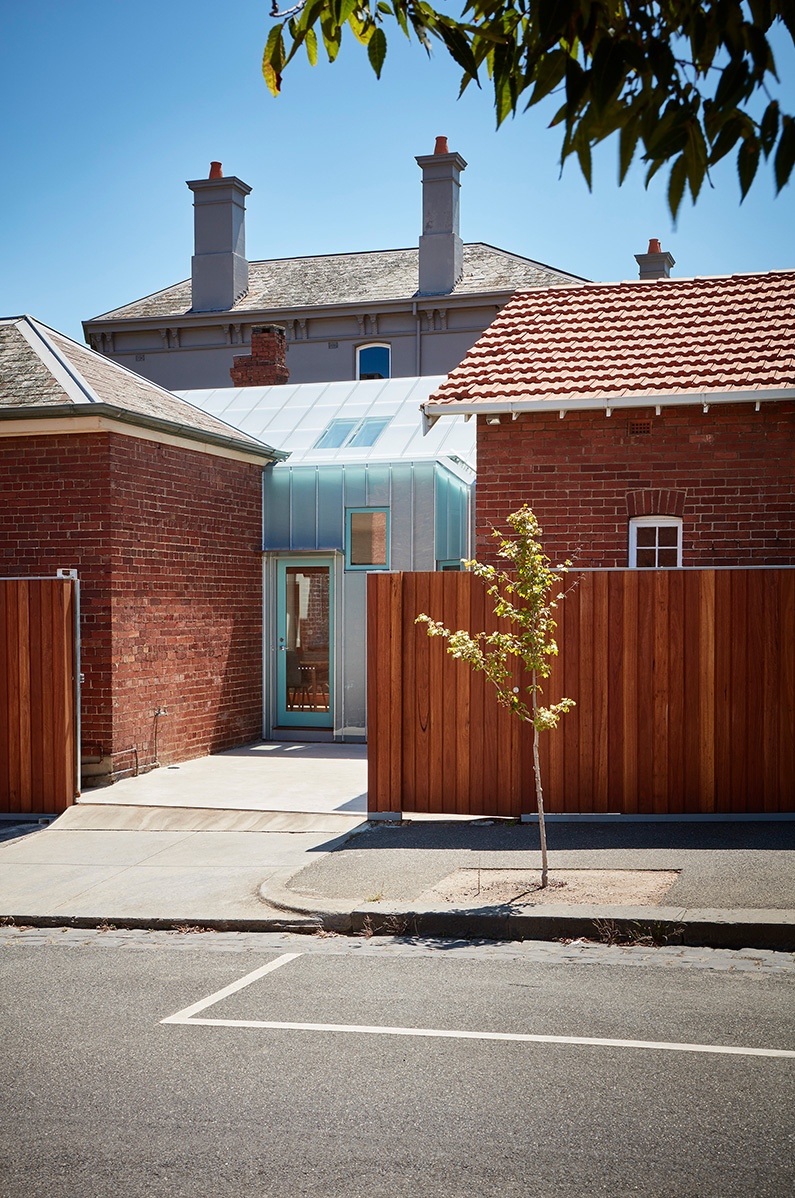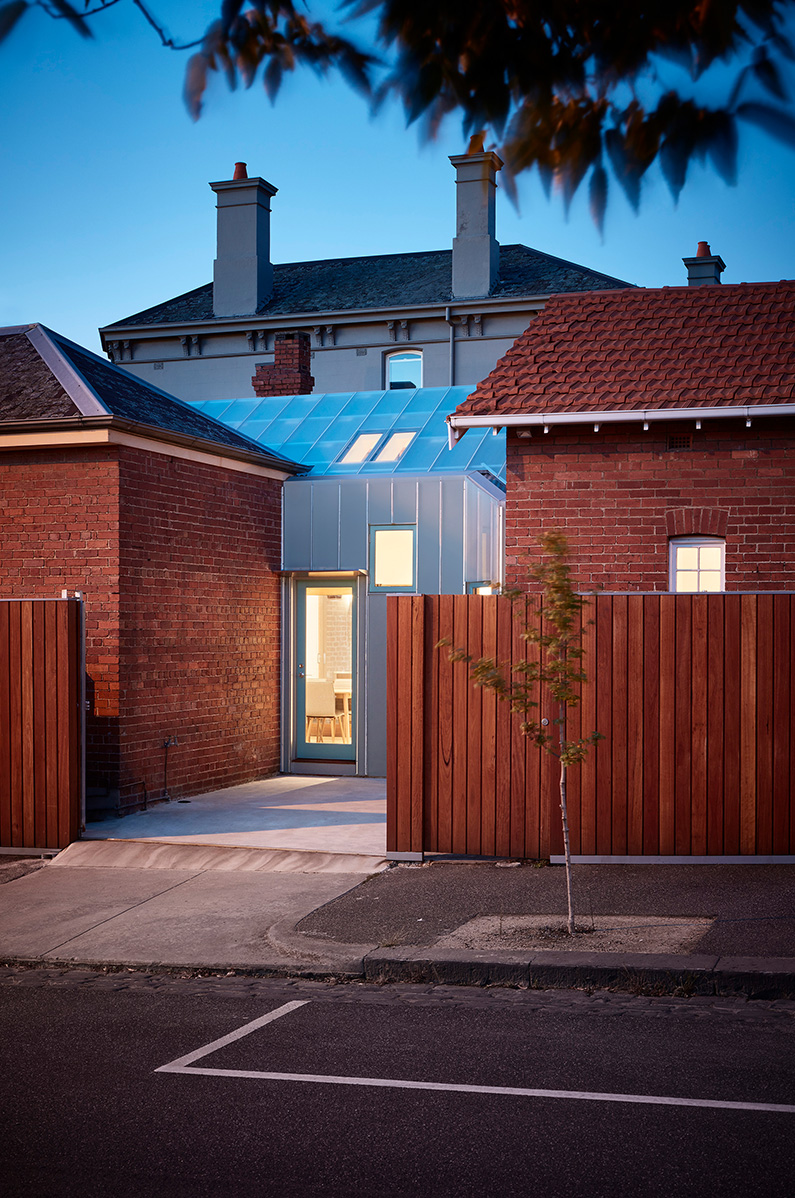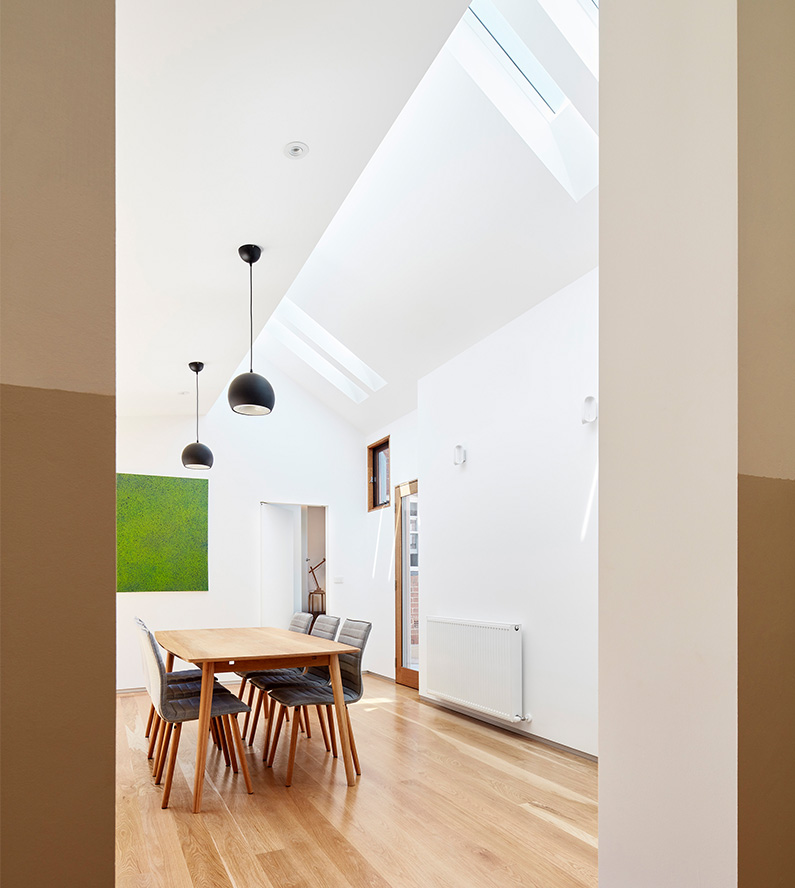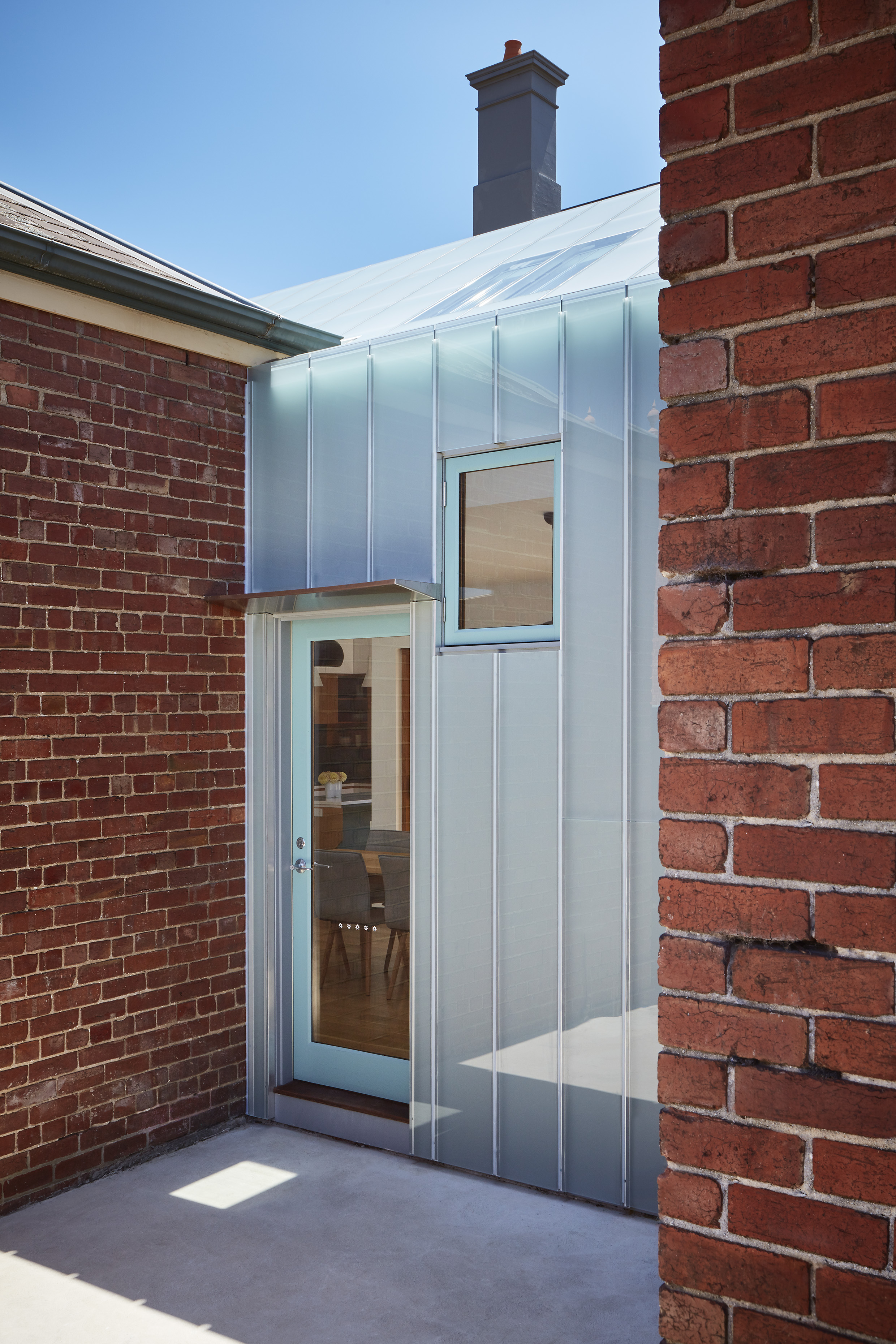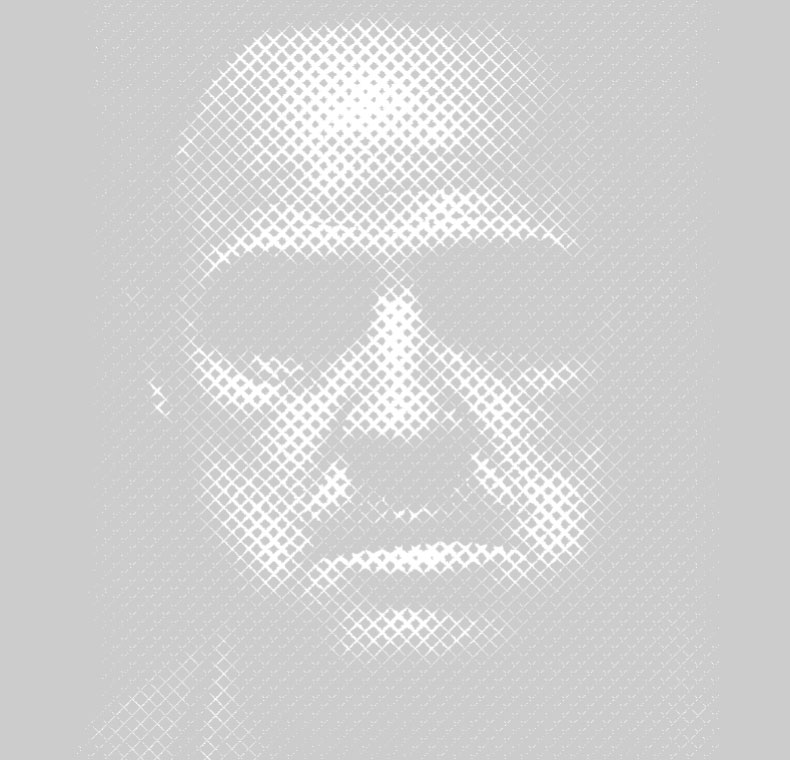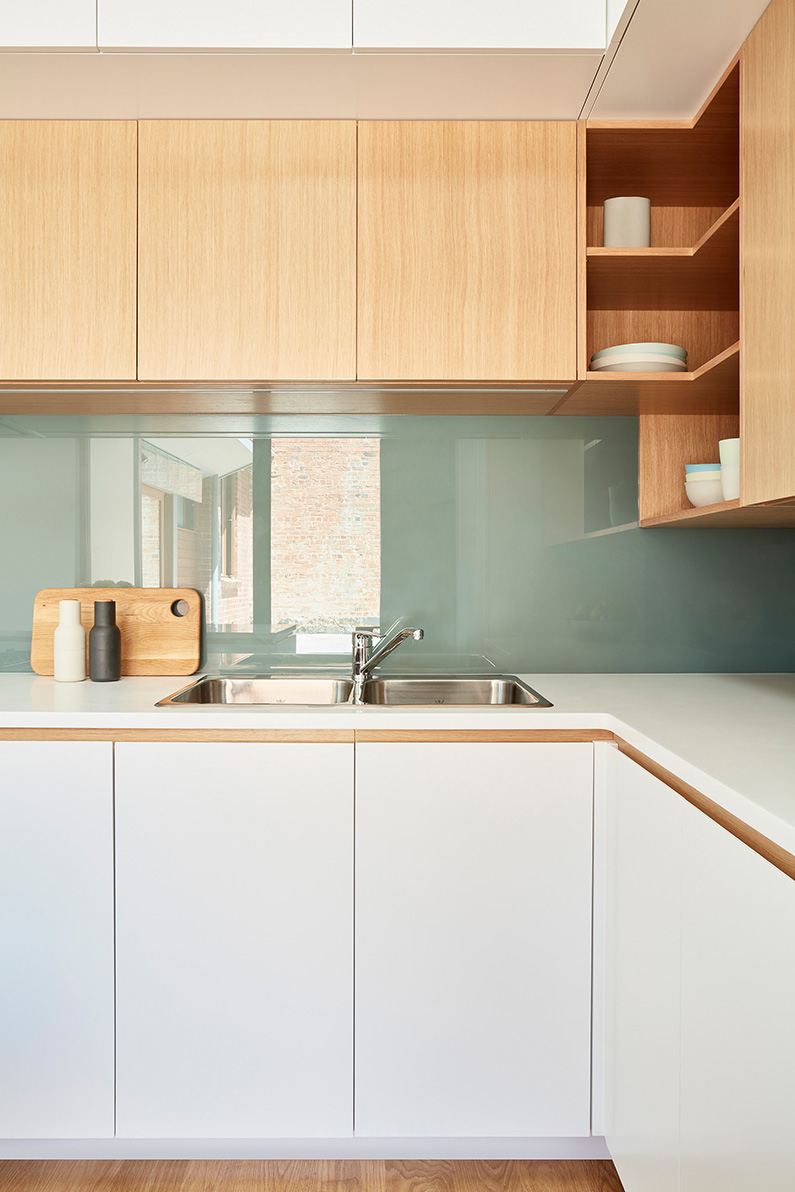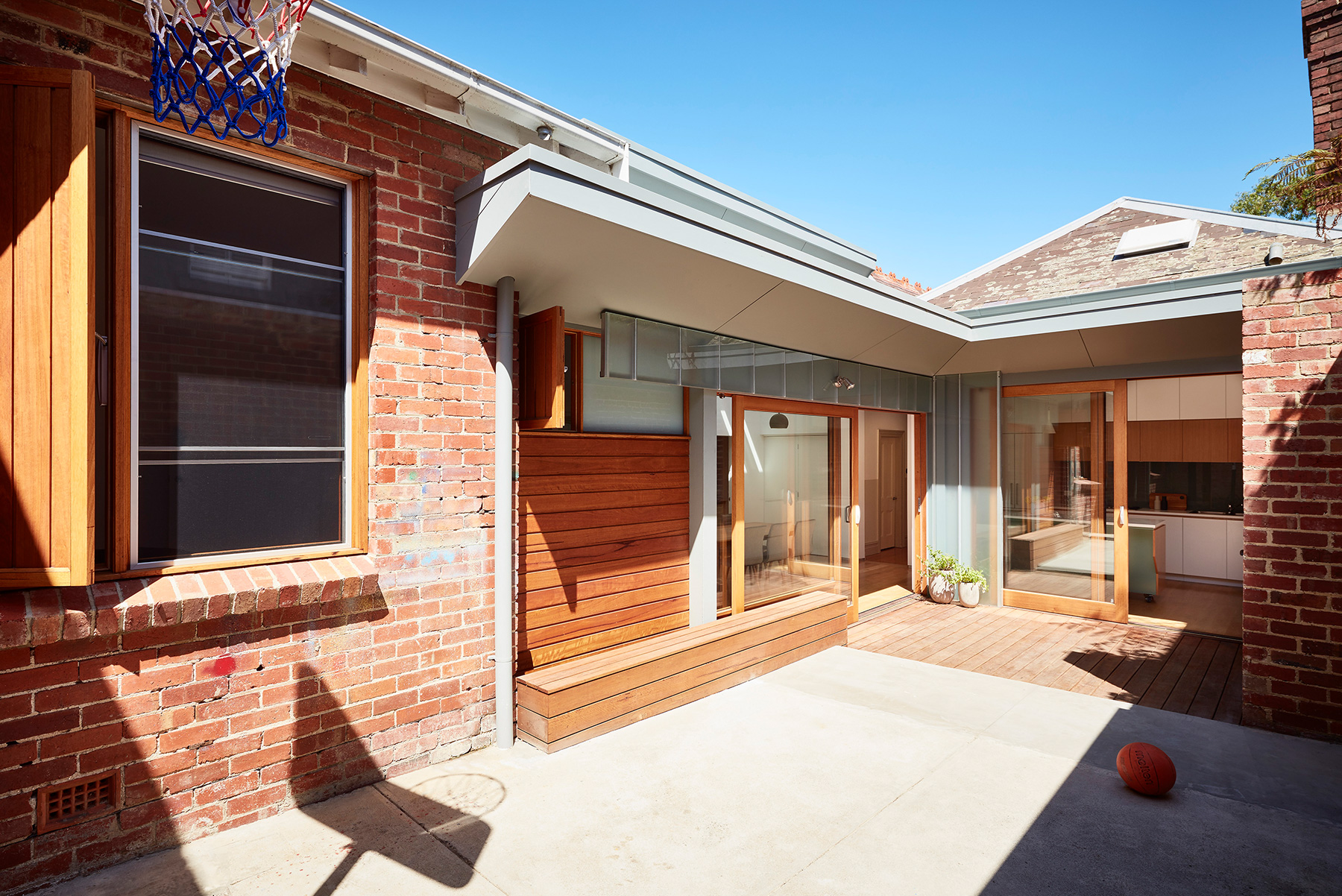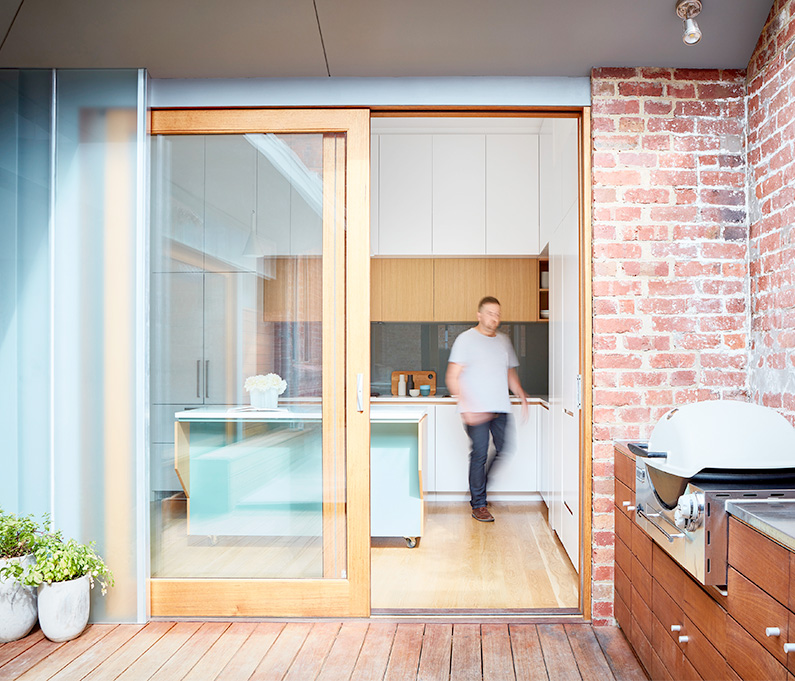Read more
Designed for a couple with three children and one of the owner’s parents, the initial discussions focused on how a family of six could work comfortably on this prominent corner site. Fortunately, the house, although tired, was in relatively sound condition, as were the two rear stables, also in red brick with multi-paned windows. The solution was to create a lightweight glass structure at the core of the floorplan that would link the bedroom accommodation to the stables, transforming these into two bedrooms for the children (with a shared bathroom). Clad in fibro cement sheeting and translucent glass (for privacy), this lightweight structure also benefits from clear glazing to increase the sunlight (and provide views and ventilation).
This new structure includes the new kitchen together with the dining and living area, the latter benefitting from the high-pitched roofline and the northern light, and the adjacent courtyard, large enough for the children to play basketball. The new glass doors from the kitchen to this courtyard also create a sense of greater space, with the built-in bench allowing for alfresco dining.
The new glass structure is ideally located at the core of the house, separating the parent’s and children’s bedrooms, while strengthening the connection to the two courtyards, one of which doubles as off-street carparking – essential in the inner-city areas. And to ensure these courtyards are fully utilised, a new high timber fence was erected.
Steffen Welsch Architects could have simply gone with brick in meshing the past with the present. But this would have produced a heavy result, and against Burra Charter heritage principles that outline the need for each period to be clearly ‘read’. While there may not be two living areas in this house and a large back garden, the benefit of living so close to the city, and near generous parklands, means the house can be functional even for a family of six.
